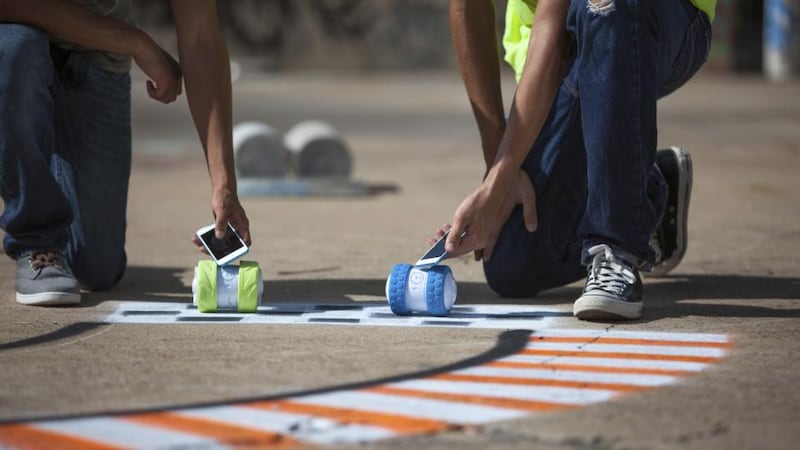When we talk about children’s access to digital technology, we often focus on “screen time”, but that term is a bit antiquated. Across the industry, the internet is escaping the screen.
Today, thermostats, bathroom scales, automobiles and even slow cookers can be controlled and updated through a live connection with the online world. Tomorrow’s toys will have similar powers. And that digital connection may forever alter how we think about play.
"We want to draw kids out of a two-dimensional screen, to blend a hands-on physical experience with an app, and make something new come to life," said Vikas Gupta, a co-founder and the chief executive of Wonder Workshop. The a start-up makes Dash and Dot, two programmable toy robots.

Dash and Dot are controlled by a mobile app, but they can also be taught to understand and react to events that happen in the real world – to play a real tune on a xylophone, say, or bark in response to a clap.
Wonder Workshop is on the vanguard of a trend that threatens to overrun much of the traditional toy business. The internet is infiltrating just about everything children play with, from balls to dolls to sticks to bricks, promising to make physical toys more fun.
Because connected toys can acquire new capabilities over time, the internet might even make toys less disposable. As soon as a child becomes bored with a toy, it might be able to do something new.
Teaching toys
Some manufacturers, including Mr Gupta, say digital toys could also revolutionize education. While disguised as playthings, toys such as the Dash robot are teaching the basics of computer programming.
Most importantly, the internetification of toys might finally break the spell of the screen.
When a generic toy such as a ball or a car is sprinkled with digital pixie dust, it becomes something like a real-life videogame. But a physical gadget that moves in the real world, right in front of a child, may make for a far more powerful experience than a game rendered only in pixels on a two-dimensional tablet.
"I think the heart of the toy industry is going to move from purely physical toys to what I call 'phygital play,'" said Richard Gottlieb, chief executive of Global Toy Experts, a consulting company.
This convergence between physical and digital toys is a powerful force, one already being felt by large manufacturers. Mr Gottlieb notes that one of the world's most popular series of action figures is an add-on for a videogame, Skylanders Trap Team. In it, physical action figures can be added to the on-screen commotion, each taking a different role in gameplay.
Along with my 4-year-old son and 1 1/2-year-old daughter, I played with some of the latest such connected toys: the Dash and Dot robots, which sell for $228 as a pair, or $169 for the larger Dash (€183/€136); Anki Drive, a robotic, artificially intelligent slot-car track ($150/€120); and Sphero 2.0 and Ollie, an app-controlled ball and a rolling robot that go for $99 (€79) each.
I found them all thoroughly absorbing. And because they are powered by software, they can offer different experiences to various ages.
For instance, the Dash robot comes with four different apps, each meant for a different age. The simplest apps work like remote controls, allowing any child who can draw on the screen to move the Dash along a path or to command it to change colours or make animal sounds.
Fully functioning
The more advanced apps offer capabilities that approach a full-functioning programming language. Older children will be able to get the robot to interpret its sensor data as it traverses a room and to perform different actions based on that data.
All that might sound a little dry, but the Dash dresses up its capabilities in approachability and fun. When my children spent much of one Saturday morning playing with the robot’s music app (in which musical notes on the screen prompt the robot to play a real tune on its xylophone), it was clear to them that this was a toy, not a mere educational tool.
– (New York Times News Service)










